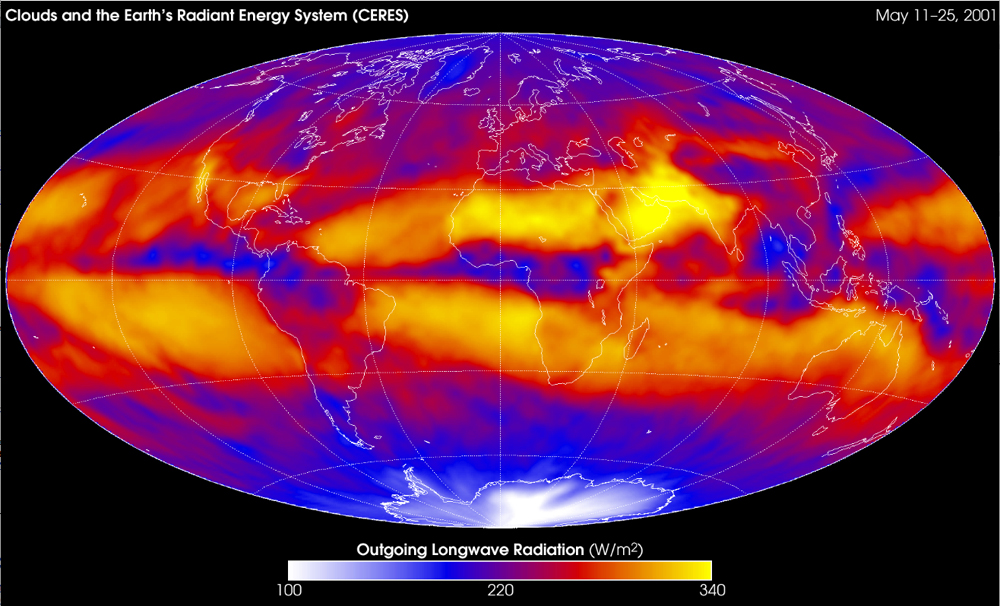Earth's 'Missing Energy' Was Never Lost

Scientists have determined that Earth's "missing energy" isn't missing after all.
Earth's primary energy source is the sun, which bombards the planet with solar rays every day. This energy helps drive our weather system, makes the planet warm enough for life and drives photosynthesis in plants, among other things. But not all of this energy is retained by the Earth — some of it is reflected or radiated back into space.
By studying the amount of solar energy absorbed by the atmosphere, and comparing it to the energy released back into space by the planet, a team of researchers has calculated how much energy is retained by the planet. Most of the energy is held within the oceans as heat; the influx causes a slow rise in temperature.
Missing or not?
A previous study, released by a different group in 2010, noted that the ocean heating from 2004 to 2008 seemed to slow. This led them to suggest that some of the planet's energy was missing.
But the new team, led by Norman Leob of NASA's Langley Research Center, re-examined the numbers measured over the course of the last decade and found them to be relatively stable.
Loeb's team maintained that the margin of error was larger than the original study took into account.
Get the Space.com Newsletter
Breaking space news, the latest updates on rocket launches, skywatching events and more!
"One of the things we wanted to do was a more rigorous analysis of the uncertainties," Loeb said in a statement. "When we did that, we found the conclusion of missing energy in the system isn't really supported by the data."
Looking for what was lost
Using a decade's worth of data collected by the Solar Radiation and Climate Experiment (SORCE), the team determined the amount of energy absorbed from the sun. They then subtracted the energy reflected back into space, as well as the energy emitted by the Earth, using the Clouds and the Earth's Radiant Energy System (CERES).
The energy left over is trapped somewhere on Earth. Less than 10 percent of it heats the land and atmosphere, and melts snow and ice, while the rest heats the ocean.
The original study found that the Earth's temperature, which had been steadily rising, slowed its pace. But the new study notes that the methods for measuring characteristics of the ocean shifted in 2003.
When accounting for the margin of error of both methods employed, the new study states that the apparent decline is "not statistically significant, nor is it observed by CERES."
Currently, data on the ocean is collected via the Argo program, which has dropped over 3,000 floats in saltwater around the world. As the floats sink and rise, they measure the temperature and salt content of the water up to a depth of 1.25 miles (2000 meters).
"Our data show that Earth has been accumulating heat in the ocean at a rate of half a watt per square meter (10.8 square feet), with no sign of a decline," Loeb said.
This article was provided by OurAmazingPlanet, a sister site to SPACE.com.
Join our Space Forums to keep talking space on the latest missions, night sky and more! And if you have a news tip, correction or comment, let us know at: community@space.com.

Nola Taylor Tillman is a contributing writer for Space.com. She loves all things space and astronomy-related, and enjoys the opportunity to learn more. She has a Bachelor’s degree in English and Astrophysics from Agnes Scott college and served as an intern at Sky & Telescope magazine. In her free time, she homeschools her four children. Follow her on Twitter at @NolaTRedd












